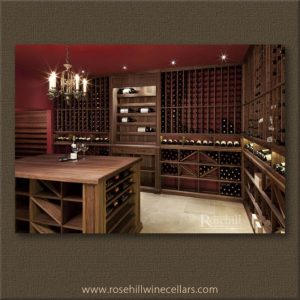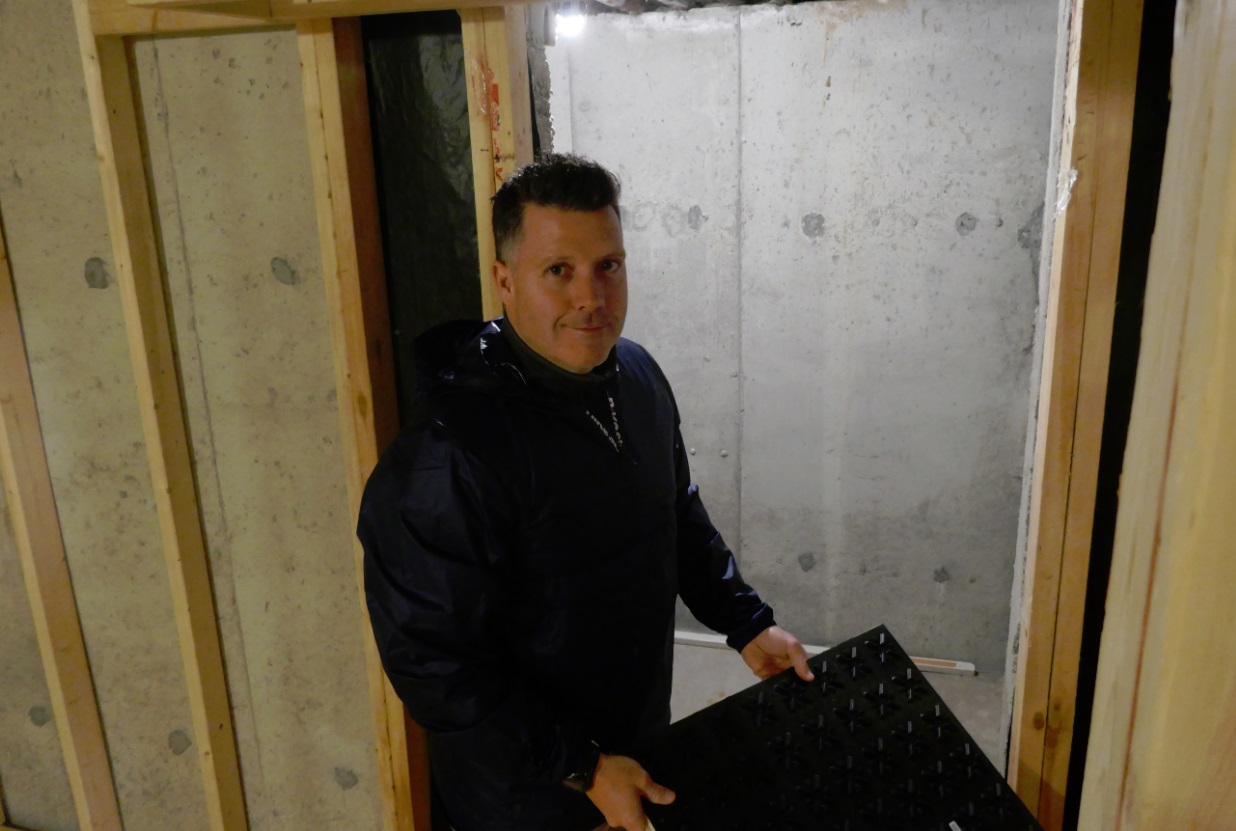
Ceiling to floor wine cellar insulation is as important as a reliable wine cooling unit (Photo: Rosehill Wine Cellars)
Wine lovers usually know about the unique components of a wine cellar, such as wine racks, a certain consistent temperature range, and humidity control, but another equally important characteristic of a wine cellar design is insulation. Just like every other room in your house or business, getting the insulation right is one of the reasons why you selected experienced professionals to do the work. Wine cellars must be properly insulated from floor to ceiling as well as all around the entrance and especially around the windows. If the wine cellar is not insulated properly, then the specific balance of conditions necessary for proper wine storage will not be met, and the collection being stored in this space will suffer accordingly.
The importance of wine cellar insulation
If wine cellar insulation isn’t done correctly, the ideal temperatures for wine won’t be maintained, which can result in wine spoilage. Another result of faulty insulation is that moisture can build up and result in mold growth.
Insulation of a wine room takes place after the space is framed out. The number one enemy of wine is heat, and insulation is what prevents external heat from entering the wine cellar. If heat seeps in, a wine cellar can’t consistently achieve the correct temperature, which is ideally 55° F or between 45° F and 65° F.
Humidity control is important in the atmosphere of a wine cellar. The ideal relative humidity level is 50% to 70%. If the air becomes too dry, wine corks can dry out, which means more air seeps into bottles, causing wine to oxidize. Too much humidity will result in mold growth.
R-30 insulation is perfect for cooled wine cellars. This amount of insulation will help you conserve energy, since the wine cooling unit won’t need to work excessively hard to maintain the desired temperature range.
 Insulated wine cellar ceiling and floor
Insulated wine cellar ceiling and floor
A wine room needs to be surrounded by insulation. This means that insulation is underneath the flooring as well as in the walls and ceiling. The only time a hollow space with insulation isn’t needed is when the floors are concrete. For flooring, R-19 insulation is ideal for maintaining a stable storage environment. By ensuring that the floor is insulated, moisture buildup can be eliminated.
The most popular types of flooring for wine cellars are cork, slate, tile, marble, and reclaimed wine barrel. Carpeting is not recommended in a wine cellar, since a carpet easily absorbs humidity and becomes a flourishing environment for fungi.
Insulated wine cellar entryway
The wine cellar door must be sealed correctly, to maintain the perfect conditions for wine. Exterior grade doors are most commonly used for custom wine cellars. The doors must have weather stripping and no leakage around the top, sides, or bottom. Glass doors on a wine cellar must have tempered insulated panels, to ensure an airtight seal.
Are you ready to have your own wine cellar for your collection of fine wine? Contact Rosehill Wine Cellars in southern Ontario for a high quality wine cellar. Wine cellar construction is what we do, complete with proper insulation.





